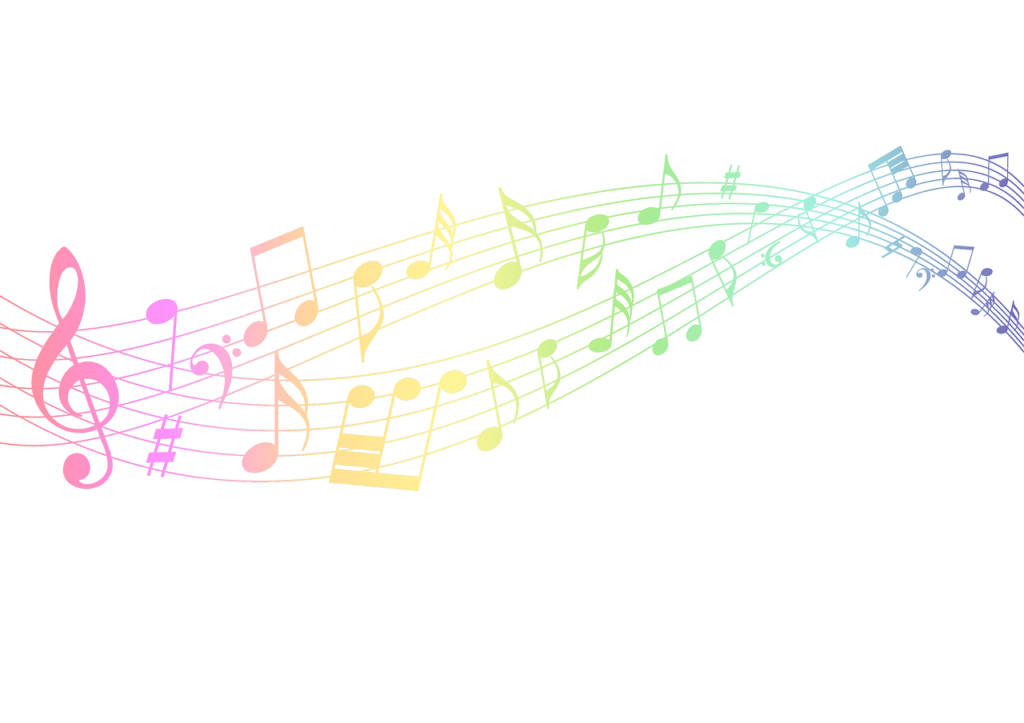How do we define note head extenders? Note head extenders get classed under a type of music notation called spatial notation.
All the measures in standard notation get a different amount of space on the page. The more notes a bar contains, the more space it tends to take up. This means that a measure with a whole note takes up less space than one with half notes. Likewise, a bar with half notes takes up less space than a bar with quarter notes, etc.
With spatial notation all of the measures have even spacing. Kurt Stone explains, “Spatial or proportional notation is a system in which durations are translated into horizontal distances of duration…” (137). Likewise, note head extenders graphically extend the note heads evenly.
Color coded note head extenders just take the note head extender concept and adds pigment. Since we are adding pigment to standard notation, the notation will not be evenly spaced. However, standard notation by itself lacks the graphic depiction of rhythm that the extended colored notes heads bring to the table.
Using them helps students to intuitively see how long the note should be held. Thus, making it easier for them to play the rhythm accurately.


